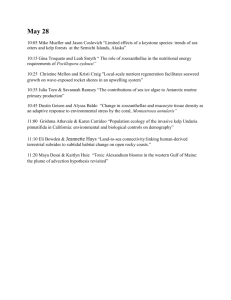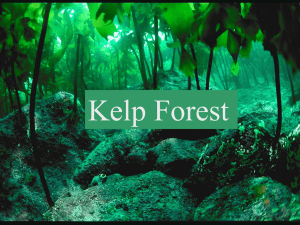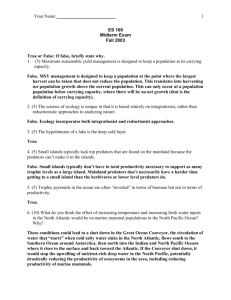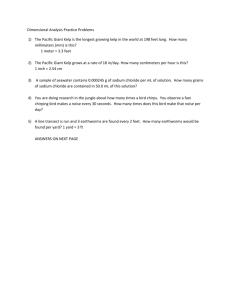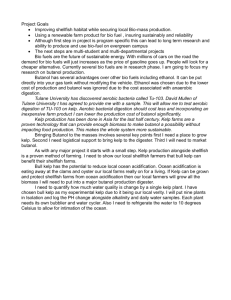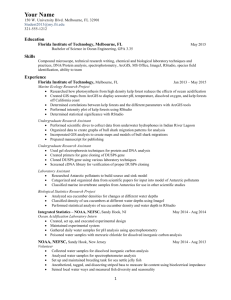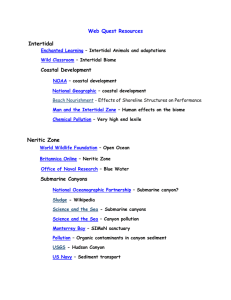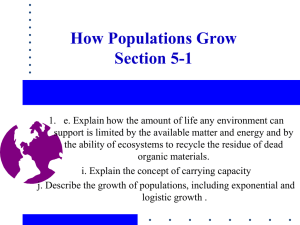Plant_Adaptations
advertisement
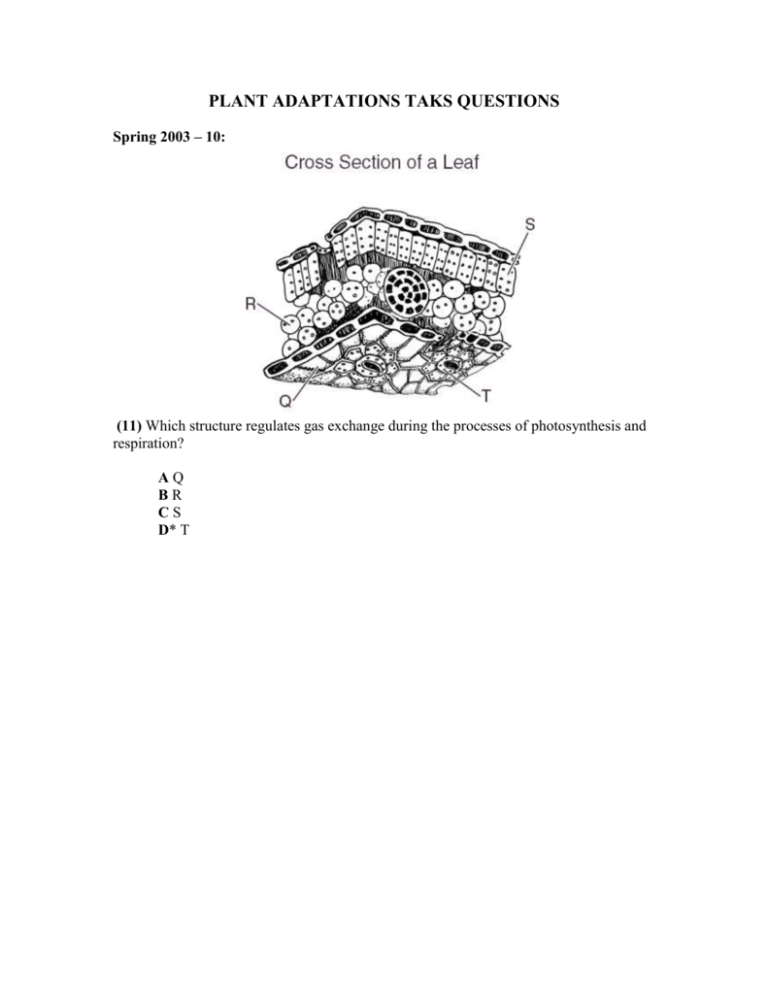
PLANT ADAPTATIONS TAKS QUESTIONS Spring 2003 – 10: (11) Which structure regulates gas exchange during the processes of photosynthesis and respiration? AQ BR CS D* T Spring 2003 – 10: (19) This seed is best dispersed by — A water B birds C* wind D insects Spring 2003 – 10: (42) Which of these characteristics might help a plant species survive in an area with limited sunlight? F Bright flowers G* Large leaves H Short stems J Thick cuticles Spring 2003 – 11: (52) Compared to annual rings of trees that have experienced years of sufficient rainfall, the annual rings of trees that have experienced a dry period will — F be softer G grow at a faster rate H* be thinner J photosynthesize at a faster rate April 2004 – 10 (32) Which of the following characteristics could help short plants survive in areas with limited sunlight? F* Broad leaf surfaces G Brightly colored flowers H Thick stems J Shallow roots April 2004 – 11 (2) Species of the genus Toxicodendron, which includes poison ivy and poison oak, produce a gummy oil that causes a severe itchy rash in some animals. This substance is part of the Toxicodendron species’— F* defense mechanisms G nutritional processes H support system J clinging ability July 2004 - 11 19 Which of the following leaf types is most likely to help a plant survive in an arid habitat? Answer: D July 2004 - 11 26 Which of these structures protects a leaf from drying out? F* Q GR HS JT October 2005 – 11 49 The box lists some characteristics of a plant that has adapted to conditions in its environment. To which type of environment is the plant best adapted? A Desert B Grassland C* Tundra D Rain forest Fall 2005 – 11 6 The benefits of spines on a cactus are similar to the benefits of the — F scales on a butterfly wing G talons on a hawk H whiskers on a cat J* shell on a tortoise February 2006 – 11 55 Plant leaves have a waxy covering called a cuticle. When some plants are stressed by lack of water, their cuticle increases in thickness. What does this action demonstrate? A Alternation of generations in plants B* Structural response to the environment C Differentiation of vascular tissue in plants D Genetic mutation induced by the environment April 2006 – 10 16 Some mesquite trees have deeper roots than any other plant in the desert. How are deep roots an adaptation for survival in the desert? F Deep roots can protect the tree from predators. G Roots encounter cooler conditions far below the desert surface. H* Roots can extend great distances to reach water. J Deep roots interact with beneficial bacteria below the surface. April 2006 - 10 27 Which of the following is an adaptation most likely observed in plants growing along Aransas Bay? A Sensitivity to green light B* Tolerance of saltwater C Extension of root length D Resistance to predation April 2006 - 10 44 Cacti grow slowly compared to most other plants. The fact that cacti keep their stomata closed for much of the day can help explain this growth characteristic. Which of these best explains the advantage of keeping stomata closed during the day? F* It limits water loss through transpiration. G It conserves oxygen produced in photosynthesis. H It recycles carbon dioxide within plant systems. J It protects plant tissues from predators. July 2006 51 Some species of kelp anchor themselves to the seafloor. These species have small air sacs, called air bladders, at the base of each leaf. The air bladders raise the top of the kelp to the water’s surface. What advantage do air bladders give the kelp? A They allow the kelp to obtain more salt from the water. B They prevent the kelp from breaking during a storm. C* They allow kelp leaves to receive greater amounts of sunlight. D They provide the kelp with protection from herbivores

